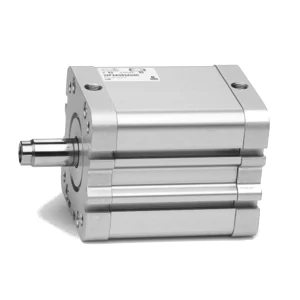For the cylinder to function, it is first necessary to pressurize a gas, such as air. This can be done by means of a pump. Since air usually exists at atmospheric pressure, pumps are used to force a given volume of air into a smaller space, causing its pressure to rise above the atmospheric level. Pressurized air stores the energy used to compress it. When allowed to expand, this air will tend to depressurize back to its original atmospheric pressure.
The pneumatic cylinder works according to this simple principle. The air is compressed and introduced into the cylindrical chamber below a moving piston. The pressurized air exerts force against the base of the piston, causing the piston to move upward through the hollow cylinder. A piston rod extends from the base of the piston up through the top of the cylinder. When the compressed air expands in the given space and moves the piston towards the end, this rod also moves, providing a way to move other mechanical elements.
ADVANTAGES AND DISADVANTAGES OF PNEUMATIC CYLINDERS
- Advantages: exhaust air from a pneumatic cylinder can be released into the surrounding air without causing environmental problems. Air is easy to obtain and pressurize. In addition, leakage is generally less of a problem.
- The disadvantages of pneumatics include the need to operate these systems at high pressure, which can be dangerous, as well as the need to keep the air clean and filtered.
DOUBLE-ACTING CYLINDERS
They allow the user full control, longer piston stroke length and constant output force throughout the entire stroke. They can also operate at higher cycle rates. However, a double-acting cylinder should not be used if the application requires a base position during safety scenarios in case there is a loss of compressed air. Since they use compressed air for both directions, they also consume more energy.







